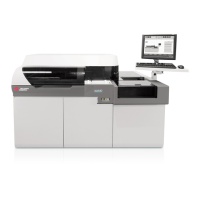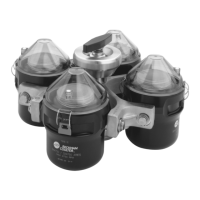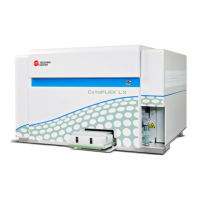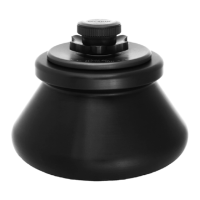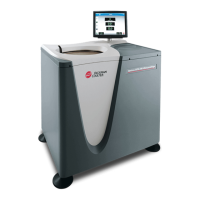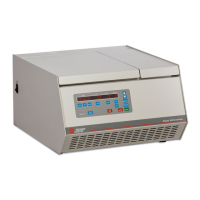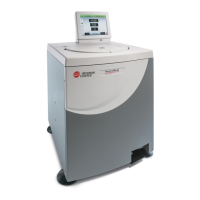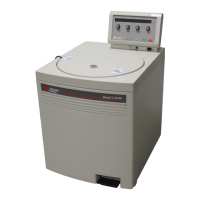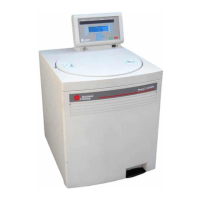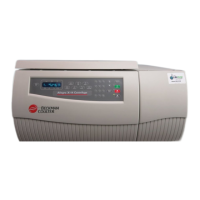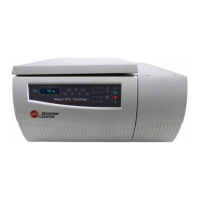Cartridge Chemistry: Calibration Theory
Drugs of Abuse Testing (DAT) Chemistries
UniCel DxC Systems Instructions For Use A13914 System Description
October 2005 Page 2-47
2
Drugs of Abuse Testing (DAT) Chemistries
The Drugs of Abuse Testing (DAT) assays require three levels of calibrators. The
calibration measures the separation between calibrators to measure reagent integrity.
The calibration factor generated is non-functional for sample result calculation.
The cutoff value for each DAT chemistry represents the mean reaction rate of the low
calibrator, reported in mA/min units on patient and control reports. The reaction rate
of the samples is compared to the reaction rate of the low (cutoff) calibrator and
reported out as POSITIVE or NEGATIVE. Cutoff values are stored in memory until
the next successful calibration.
Model #9 Math Model #9 is an extension to model #1, the four-parameter log-
logit function.
The "c" is allowed to be either +1 or -1.
If c = +1, then this is equivalent to model #1.
If c = -1, an alternative function is being used.
This function cannot be solved directly for concentration. The
instrument uses an iterative method to determine the sample value.
Polynomial
Exponential
(PXP)
Quadratic
(POLY2)
Lorentz
Double
Inflection
Model DP4
Table 2.13 Math Models for Non-Linear Chemistries, continued
Type Formula
(2 of 2)
E014424L.EPS
R = R
0
+ K
c
1 + c ∗ e
–a–b∗1n(conc)
1
E014476L.EPS
R = b0 + P
n
(x)e
-a∗(conc)
P
n
(x) = Polynomial of degree N
E014477L.EPS
R = b0 + b1
∗
(conc) + b2
∗
(conc)
2
E014478L.EPS
R = R
0
+ π {arctan(c
∗
conc + a) + 2 }
π
K
c
A011537L.EPS
R =
K
c1
+
K
c2
1 +
a
1
1
+
a
2
Conc Conc
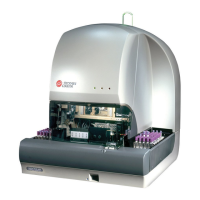
